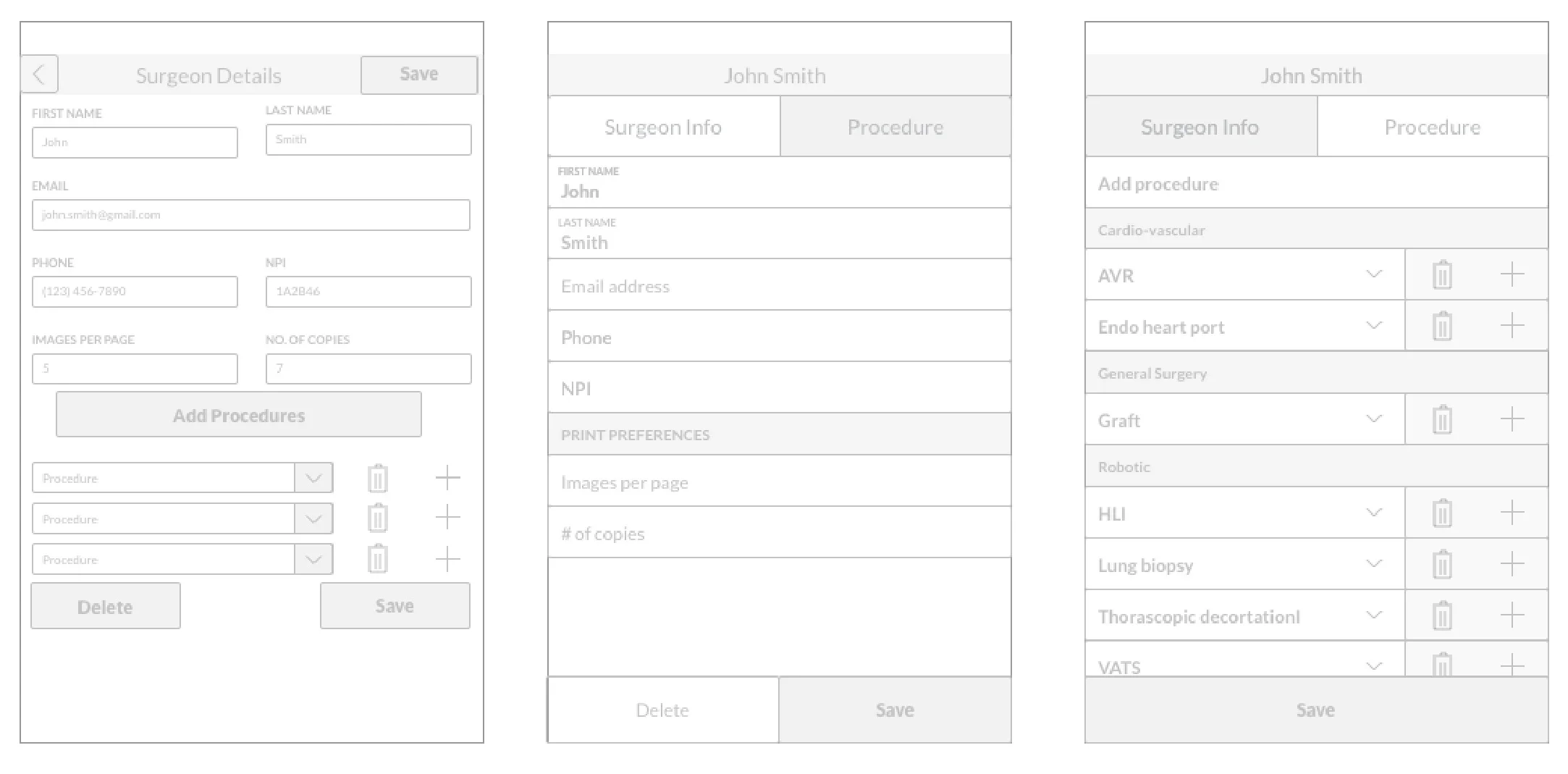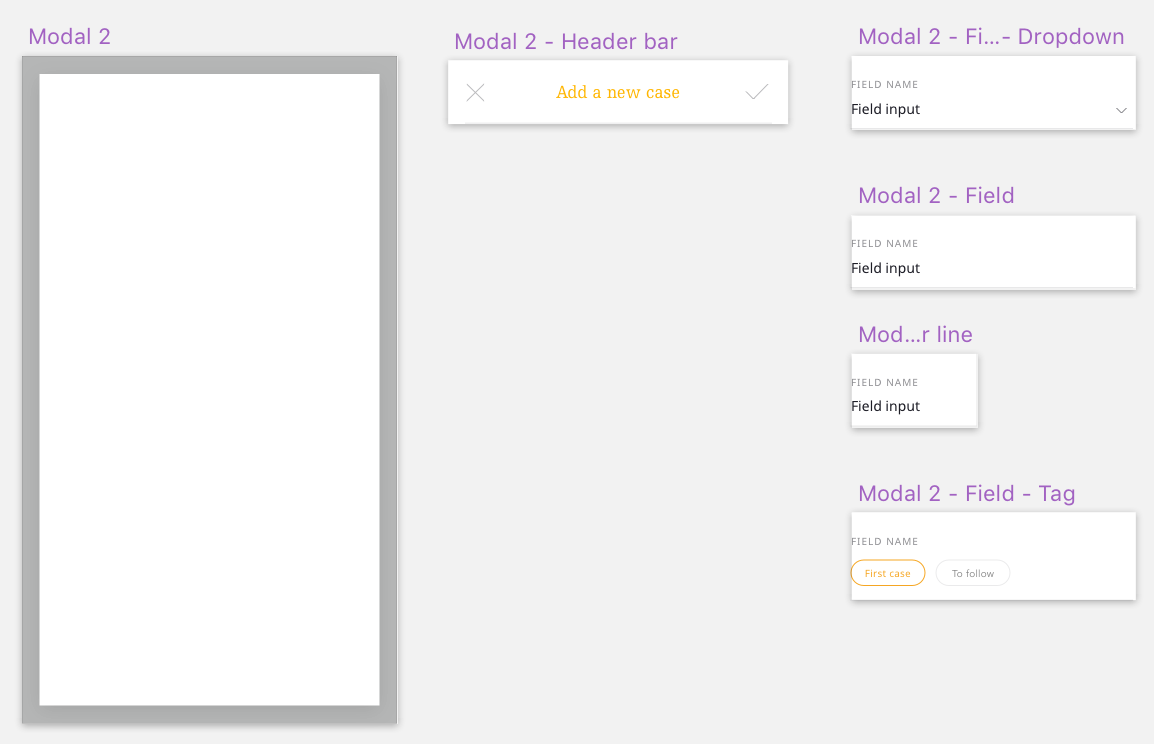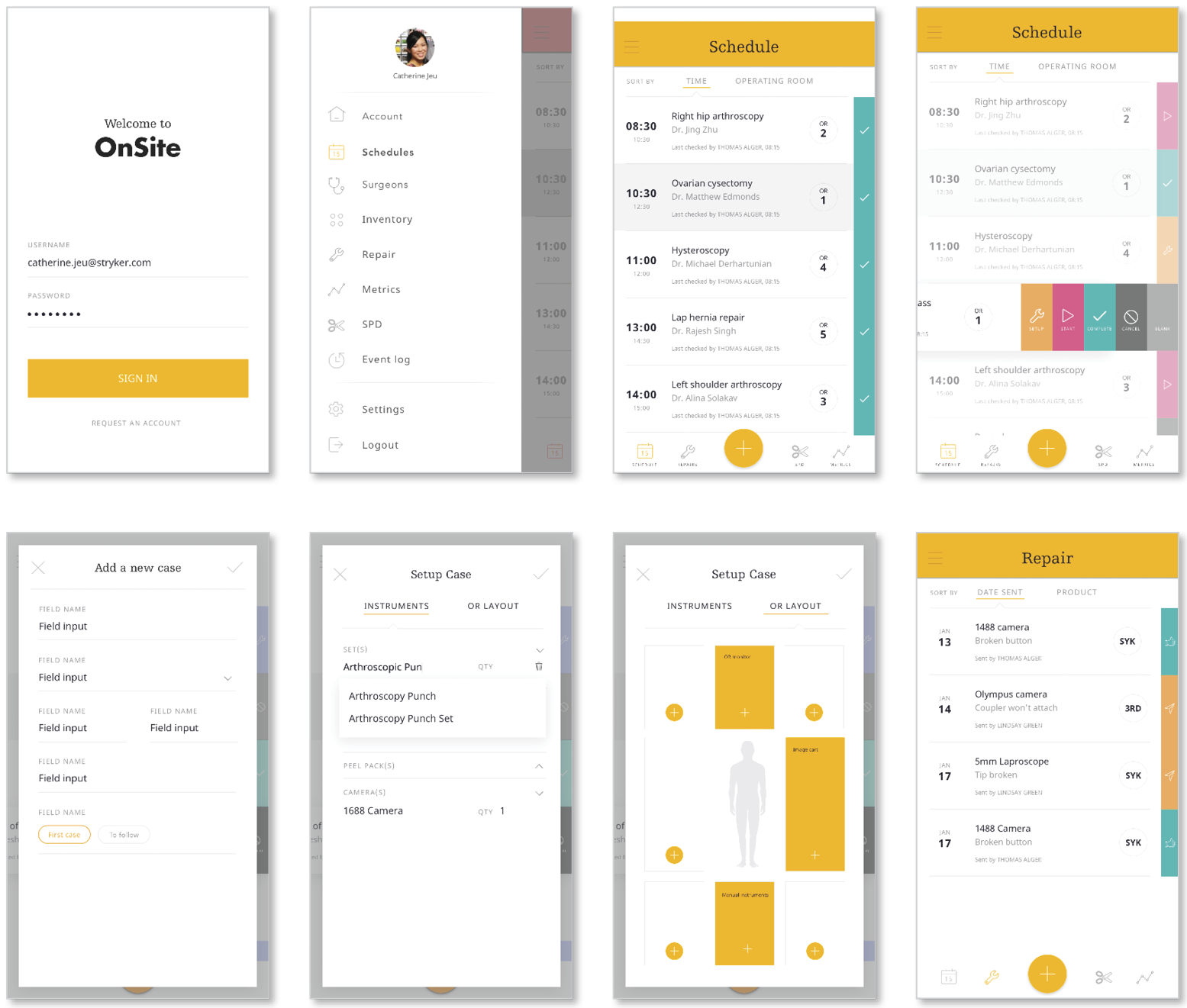PROCARE ONSITE MOBILE APP
Redesigned mobile app to increase user engagement
My role
Interaction design
Visual design
Team
Product Manager
Marketing
Engineering
OnSite Specialists
Project length
6 months
Background
OnSite service, is a workflow solution where specialists help hospitals in the operating room, sterile processes, case cart management, and reprocessing. The service had been anecdotally well-received by hospitals as a valuable asset for its operations. Stryker wanted to collect the data to quantify its value for both hospitals and Stryker. The ProCare OnSite mobile app, set up for this purpose, had been plagued with usability issues and low usage.
Solution
Redesign mobile application to increase usability and engagement of the ProCare OnSite mobile app to encourage real-time data input from OnSite reps so app could fulfill its purpose.
Impact
The redesign, paired with some marketing and education, increased engagement, with a 10x in active users, 20x in hospitals managed, and 20x in surgeries tracked.
The increase in app engagement by the on-site specialists helped Stryker quantify ProCare OnSite’s value to hospitals’ operation. On average, hospitals using ProCare saw revenues increase of 47%, repair costs dip of 28%, decrease in OR time of 57%, and an improvement in customer satisfaction of 96%.
Reference: These metrics were collected from the app’s data analytics, a couple of months after the app redesign launch.
Research
A day in the life of an on-site representative
I conducted observational research at Palo Alto Veteran’s Hospital, to understand a Stryker technician’s day and responsibilities. This included observing three endoscopic surgeries and the sterilization of surgical equipment.
On-site specialist training
I attended a 3-day on-site specialist training, for new specialists, in Houston, Texas. This is where I learned what on-site specialists were required to know and keep track of.
Heuristic evaluation
I conducted a heuristic evaluation of the current On-Site specialist application.
Stakeholder interviews
i conducted stakeholder interviews with different on-site specialists, regional mangers, and training staff to understand the on-site specialists’ workflows and painpoints.
Research artifacts
Personas
I created personas based on the research. This app redesign focused on OnSite Omar because he would be the main user of the app, while the other users would be consumers of the data he inputs.
Findings
✅
On-site specialists bring workflow efficiency to hospitals.
↓
Needs to be quantified
↓
↓
Needs to be supported
↓
A wi-fi enabled mobile solution that is easy to use would enable specialists to quantify and manage their workflow.
The value on on-site specialists is their help in ensuring that equipment is available and ready before, during, and after surgery.
Three themes emerged as the root cause of poor usability and low engagement in the current app design:
Unclear task flows
Ambiguous data representation
Prolonged time on task
Opportunity
How might we provide specialists an intuitive and efficient mobile solution to help support and quantify their workflow?
Design process
I wireframed the original UI and worked towards improving the task flow while respecting the current backend architecture. I explored different interaction patterns.
The left image is the old UI and the right two images is the UI explorations I did.
Design system
I created a design system of colors, typography, and layout. I built the foundational elements using Sketch symbols, so that I could easily see how it affected the UI. I used Illustrator to explore color harmony and contrast.
Solution
The key usability issues were addressed through the following redesign:
Developed consistent UI patterns
Improved visual design to decrease cognitive load
Increased app professionalism by improving visual design integrity













